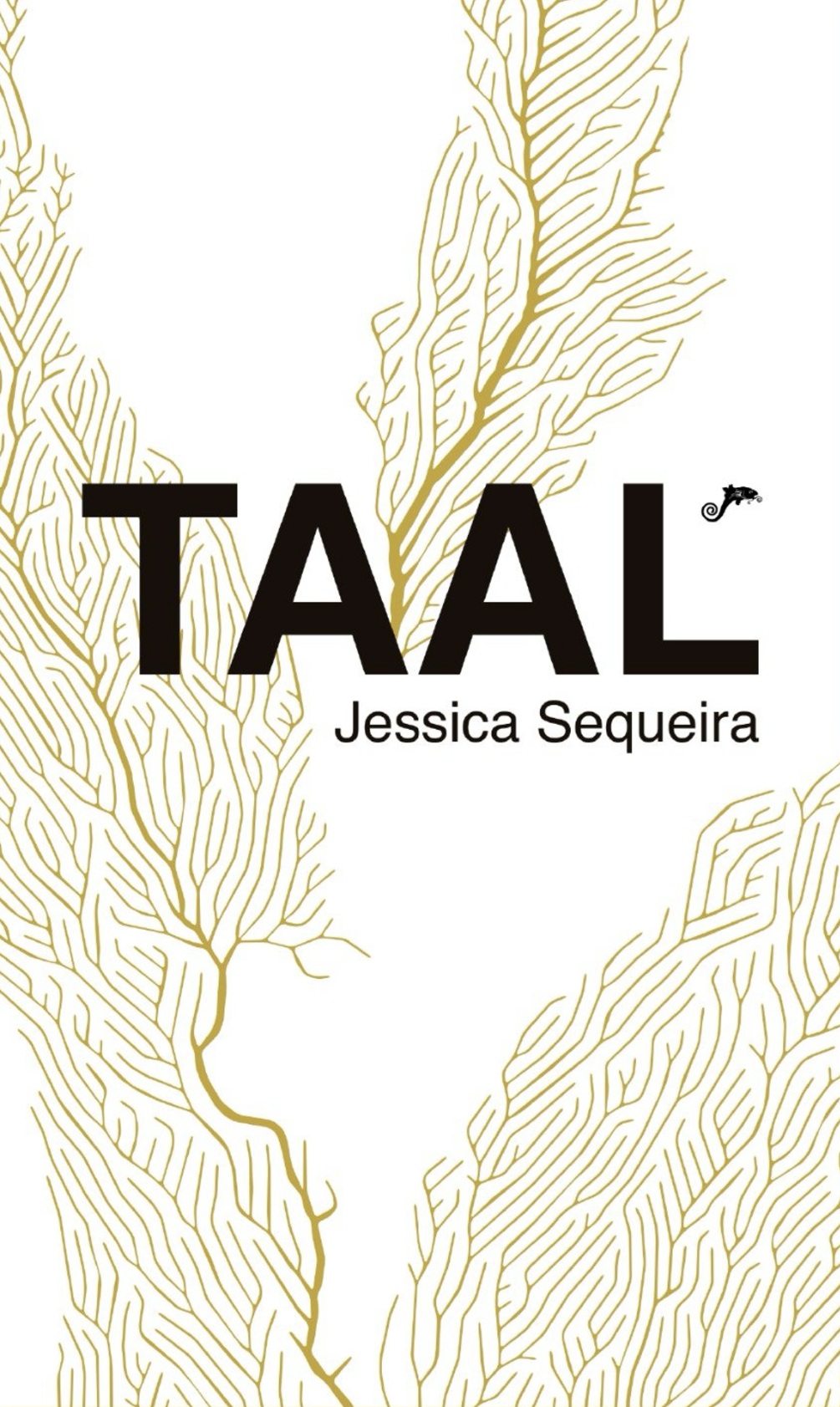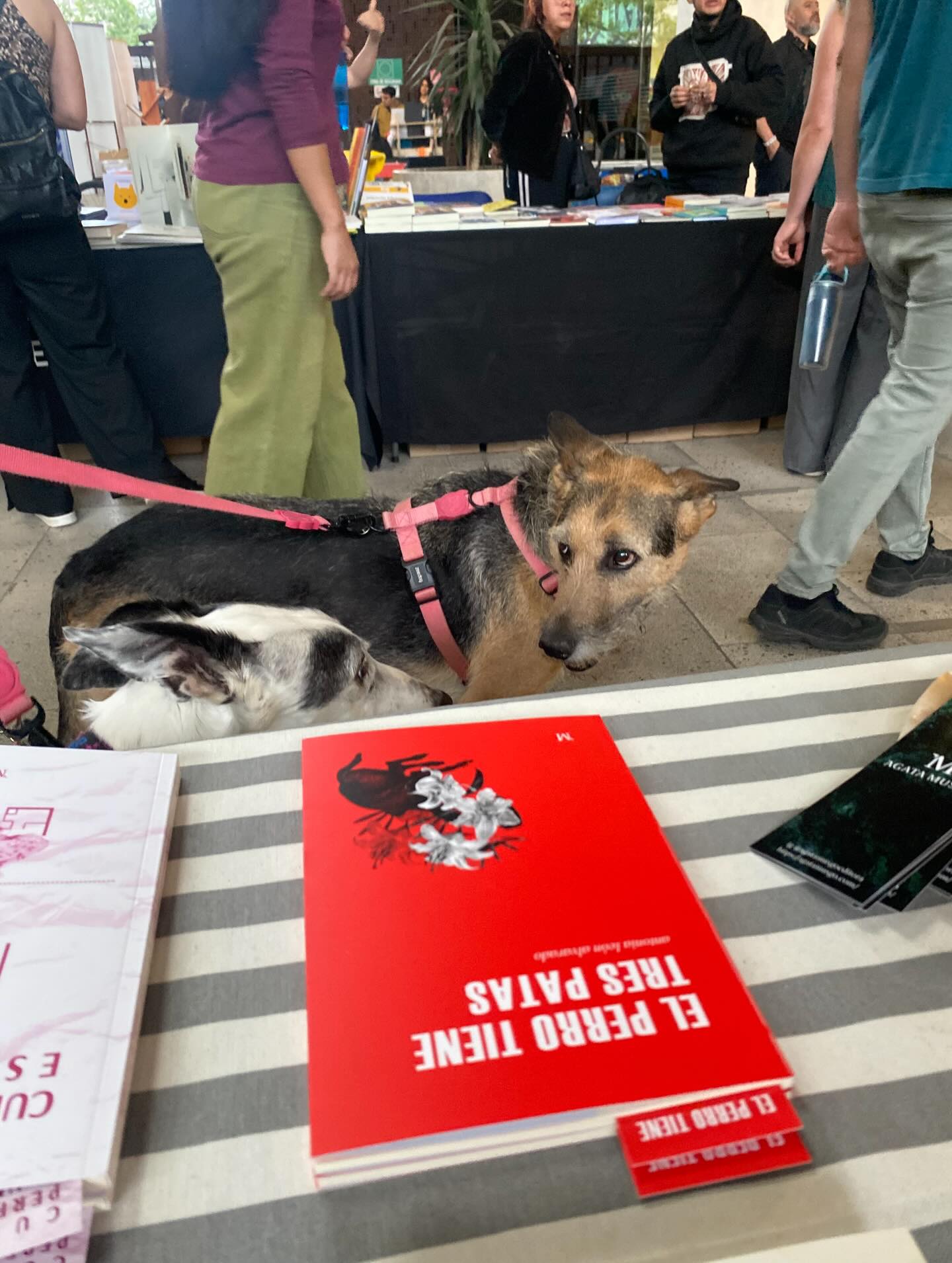Patched skin: sample art by Jamaican painter Krystal Ball

[ Pincha aquí para leer la versión en español ]
Born in 1991 in Portmore, right outside of Kingston, Krystal Ball is a prominent young artist whose work reflects both personal struggles and social concerns, as well as a love of Jamaican culture. She has received both Jamaican and international awards, which has led to her to travel abroad to the United States, Cuba, and Russia. She currently lives in Kingston, where she paints and teaches art classes. Ball spoke with Óscar Pimienta for La Raza Cómica in Kingston in December of 2017.
Óscar Pimienta (OP): Could you briefly explain how you became interested in art?
Krystal Ball (KB): It was always a way to pass time. As a child, I was very sick and spent a lot of time in the hospital. So, while I was there I would normally draw. My first piece of work was a drawing of a carrot but I drew a lot of cartoons too. I would read books and then try to draw the characters in them. And that turned into me just drawing what I imagined. I actually didn’t start painting until about four years ago. But I find I can express myself more through painting because I can capture a mood or emotion entirely with color as opposed to just lines.
OP: Who are some of your artistic influences from Jamaica and abroad?
KB: In Jamaica, definitely Cecil Cooper, who passed away recently. His work is not just typical landscapes and his images often make me feel uncomfortable, which is thrilling. As for abroad, I really like Basquiat. I was introduced to his work at a very interesting point in my life, when I began going against everything I had been taught in art, since I saw it as confining me. And I remember how hard it was to unlearn what I had known my entire life. So, when I saw Basquiat’s work, I really appreciated it because it was child-like: he still had a style, I saw the same faces, features, and colors—you could tell that there was some order to the madness—but at the time I was captivated by how he could let himself go. And I don’t consider Andy Warhol one of my favorite artists, but I do think he has had some influence in my work. Also, Jackson Pollock, because his work can reflect so many emotions even though it’s abstract.
OP: Do you ever think about your potential audience when painting? Especially considering people who may not necessarily consume art regularly?
KB: At this point in my life, I’m not really concerned about my audience. I’m more focused on expressing my thoughts in my art. For example, the painting I did of the lady as Medusa, I wanted to make a statement with that image. I don’t like the direction a lot of Jamaican females today are going in: it’s all materialistic and they feel the need to use men to get material things. So, I decided to say something about it. Now, if somebody comes along and loves that painting, fantastic. But if someone genuinely doesn’t like it, that’s fine too, because it’s not just about selling or having somebody like your work, it’s about making people uncomfortable. That particular painting has provoked reactions from one extreme to the other: people either hate it or they love it.
OP: Like the statue of the nude couple at Emancipation Park [note] http://www.emancipationpark.org.jm/about-us/facey-sings.php [/note], which provoked controversy when it was unveiled in 2003…
KB: Yes, I feel that a lot of Jamaicans aren’t true to themselves in terms of bodies. People get upset about nudity, but it’s everywhere—I mean, the media is completely sexualized. At first, that statue provoked pure outrage and now it is very much accepted, so it definitely brought down some barriers. I also think Jamaicans are more inclined to accept things that aren’t Jamaican, because I’m pretty sure if Jamaicans went to another country and saw that same statue, they would think nothing of it because it’s in another country. But if it’s made here, they feel like it’s the end of the world.
OP: What obstacles do young artists face in Jamaica, in terms of class, race, or gender? What has your experience been as a woman artist?
KB: When I came back to Jamaica after studying in Philadelphia for two years, I felt very rejected as a young artist. No galleries wanted to show my work because I didn’t have an established name. They didn’t think my work would sell, even though they never took the time to look at it. This one venue I had in mind rejected me, but when I asked a friend of mine who is white to contact the place and request to rent it, they said yes for the exact same dates. He’s not even an artist, he’s just a white man. I ended up not using that venue. Young artists in Jamaica have a hard time exhibiting their work. The art scene is very small, based on a select group of people. I guess that’s the art scene everywhere, but here it’s so prominent because it’s a small country. Being a woman in the art world can be rough, since the scene is mostly dominated by male artists. I’d like to convey that Jamaican female artists are practicing a different form of art and that there is a place for us. Woman can be successful through art.
OP: Landscape seems to be a major motif in Jamaican art. Can you discuss this issue more in depth and any problems related to it?
KB: The natural beauty of the island is striking, so it’s understandable that so many landscapes appear in our art. And as I said, it’s very difficult to unlearn things. At school, teachers will take you to the rivers and teach you how to paint rivers, they’ll take you to the mountains and teach you to paint the mountains. I started painting landscapes as well. But I’ve always felt that it’s already there and there’s no fun in recreating something that’s already there—it doesn’t need to be painted. A big factor in landscape production is the fact that tourism sells, that is one of our national products. So that contributes to people continuing to paint landscapes, and country or market scenes. I don’t feel like a lot of the art here challenges issues of class or racial prejudice—it’s more for decoration. Art is supposed to give a voice to situations, speak out about injustices or promote certain causes. But a lot of it is watered down for buyers, mainly because people need to make a living.
OP: Have any paintings come out of your experience of traveling abroad?
KB: Yes, there’s one of a little boy whose head is detached from his body and he’s looking upwards. I had recently traveled to Cuba and Russia in one trip and upon coming back to Jamaica, I felt like my head was still in a completely different place, which is why the boy’s head is detached. Coming back from those countries inspired me very positively. And I have another painting of an African lady with braids, which came about because of all the Africans I interacted with in Russia. A lot of them were from some very poor countries, but they were proud of where they come from, as with the Cubans I met as well. That sort of self-respect, despite dealing with economic or social hardships, was inspirational.
OP: What about your time living in the United States?
KB: I became very depressed when I came back from Philadelphia because I realized how nothing had changed in Jamaica. That’s actually when I began painting, as a way to counter my depression. I discovered I could target my feelings and articulate them in different ways. I have a painting called “Icarus,” which is about this experience. I went away expecting this glorious adventure and I ended up flying too close to the sun and falling back down. My way of dealing with it was through art. The painting of the lady with the mask is about this experience of depression too. The different tones of her color signify the different levels of her sadness, all mixed up into her skin. Her golden mask is to symbolize that front you put out for people: everybody sees this golden, fuzzy personality, but they don’t know what is going on underneath the mask.
OP: Your dancehall series has been received very well. Is there a story behind those paintings?
KB: I did those paintings for a specific show to capture before the dance, in the dance, and after the dance [note] Of this series, we have only been able to reproduce the before and after scenes; the second painting, in the dance, was slightly ruined and is currently being fixed. [/note]. Before the dance is a close up of a man lighting a spliff, with a white t-shirt, boxers showing, and a Louis Vuitton belt buckle. The second is actually in the dancehall: you see the DJ, the speaker boxes, and the crowd. And the last one is the scene with the jerk chicken man because, after dancehall, Jamaicans go to eat at either two places: you either find someone who’s cooking soup or someone who’s jerking chicken. I like this series a lot, it was the first time I painted scenery and I wanted to capture an important part of Jamaican culture, which is dancehall. If you look at the people, their skin color is patched, which is the same with all my other paintings.
OP: Are you currently working on any personal or collective projects?
KB: I have plans to develop a project of a traveling art show amongst all the islands of the Caribbean. The idea is to unite the islands in terms of art and culture. When I traveled to Russia with other artists from the Caribbean, I realized how we are all very different but similar at the same time. Art is a good way to express yourself because you need no translation. It doesn’t matter if you speak French, Spanish, English, Patwa. It’s difficult to receive government funding for these types of projects, but I hope to follow through with it within the next couple of years: I’ve been speaking to artists from different Caribbean islands, the National Gallery in the Bahamas, for example, and several people from Cuba and Dominica.
[envira-gallery id=»12153″]






